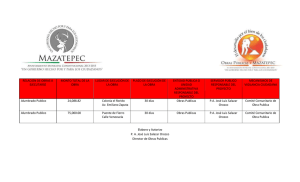RETRATO PORTRAITS
Anuncio
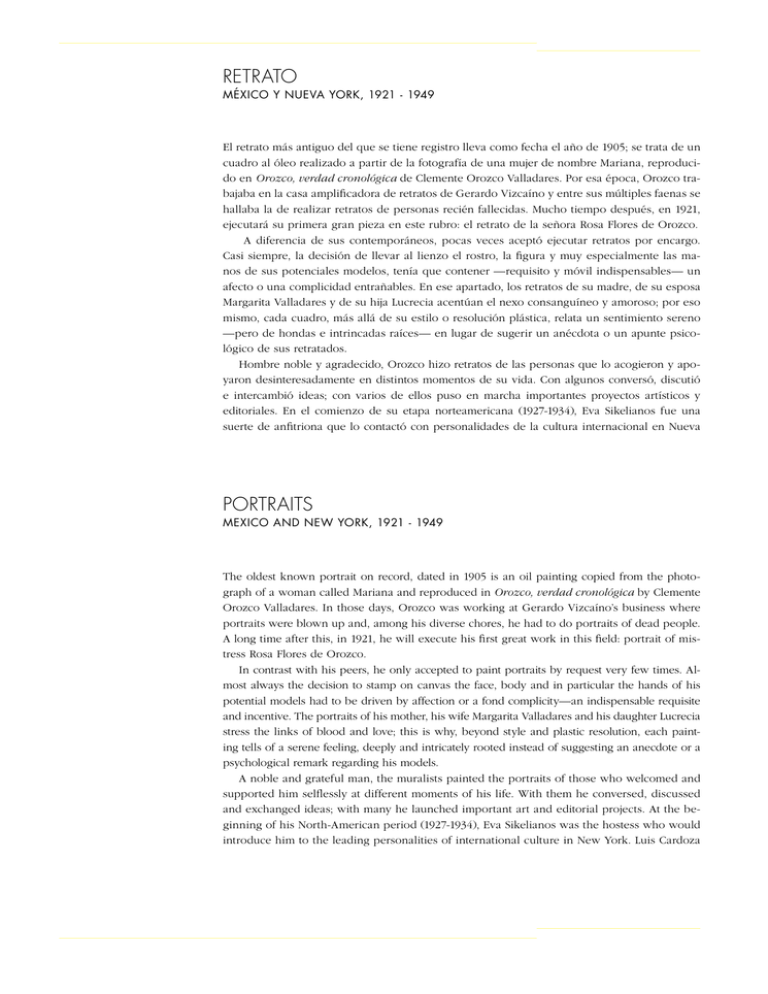
Retrato México y Nueva York, 1921 - 1949 El retrato más antiguo del que se tiene registro lleva como fecha ­el año de 1905; se trata de un cuadro al óleo realizado a partir de la fotografía de una mujer de nombre Mariana, reproducido en Orozco, verdad cronológica de Clemente Orozco Valladares. Por esa época, Orozco trabajaba en la casa amplificadora de retratos de Gerardo Vizcaíno y entre sus múltiples faenas se hallaba la de realizar retratos de personas recién fallecidas. Mucho tiempo después, en 1921, ejecutará su primera gran pieza en este rubro: el retrato de la señora Rosa Flores de Orozco. A diferencia de sus contemporáneos, pocas veces aceptó ejecutar retratos por encargo. Casi siempre, la decisión de llevar al lienzo el rostro, la figura y muy especialmente las manos de sus potenciales modelos, tenía que contener ­—requisito y móvil indispensables­— un afecto o una complicidad entrañables. En ese apartado, los retratos de su madre, de su esposa Margarita Valladares y de su hija Lucrecia acentúan el nexo consanguíneo y amoroso; por eso mismo, cada cuadro, más allá de su estilo o resolución plástica, relata un sentimiento sereno —pero de hondas e intrincadas raíces— en lugar de sugerir un anécdota o un apunte psicológico de sus retratados. Hombre noble y agradecido, Orozco hizo retratos de las personas que lo acogieron y apoyaron desinteresadamente en distintos momentos de su vida. Con algunos conversó, discutió e intercambió ideas; con varios de ellos puso en marcha importantes proyectos artísticos y editoriales. En el comienzo de su etapa norteamericana (1927-1934), Eva Sikelianos fue una suerte de anfitriona que lo contactó con personalidades de la cultura internacional en Nueva Portraits Mexico and New York, 1921 - 1949 The oldest known portrait on record, dated in 1905 is an oil painting copied from the photograph of a woman called Mariana and reproduced in Orozco, verdad cronológica by Clemente Orozco Valladares. In those days, Orozco was working at Gerardo Vizcaíno’s business where portraits were blown up and, among his diverse chores, he had to do portraits of dead people. A long time after this, in 1921, he will execute his first great work in this field: portrait of mistress Rosa Flores de Orozco. In contrast with his peers, he only accepted to paint portraits by request very few times. Almost always the decision to stamp on canvas the face, body and in particular the hands of his potential models had to be driven by affection or a fond complicity—an indispensable requisite and incentive. The portraits of his mother, his wife Margarita Valladares and his daughter Lucrecia stress the links of blood and love; this is why, beyond style and plastic resolution, each painting tells of a serene feeling, deeply and intricately rooted instead of suggesting an anecdote or a psychological remark regarding his models. A noble and grateful man, the muralists painted the portraits of those who welcomed and supported him selflessly at different moments of his life. With them he conversed, discussed and exchanged ideas; with many he launched important art and editorial projects. At the beginning of his North-American period (1927-1934), Eva Sikelianos was the hostess who would introduce him to the leading personalities of international culture in New York. Luis Cardoza York. Luis Cardoza y Aragón y Justino Fernández fueron los primeros críticos que valoraron, organizaron y difundieron la obra de Orozco con innumerables libros, indispensables en la bibliografía selecta del artista. El retrato de la señora Carmen T. de Carrillo Gil trae a la memoria a un amigo y devoto admirador de Orozco, Álvar Carrillo Gil, quien desde principios de los años cuarenta reunió la mejor colección de su obra, así como de otros artistas de la época En sus últimos años, el pintor y el arquitecto Mario Pani realizaron y soñaron colaboraciones donde la pintura de uno y las edificaciones del otro, dialogaron con plenitud e imaginación; los murales y la arquitectura de la Escuela Nacional de Maestros son fiel ejemplo de ese diálogo fértil y amistoso. En los retratos del arzobispo Luis María Martínez y de Enrique Corcuera —piezas maestras del género por donde se las vea— el artista se fascinó con las posibilidades plásticas de ambos modelos, por el gesto firme y decidido del primero y el garbo sereno del segundo. Cada uno de los personajes de esta breve galería, de distintas maneras y niveles, tuvo un vínculo relevante en la vida y en el arte de Orozco; en sus miradas, poses y gestos ineludiblemente se encontrará también al genial pintor. Por último, lejos de toda obsesión narcisista, el pintor realizó a lo largo de su vida varios autorretratos, desde las tempranas caricaturas de los años de la Revolución hasta los óleos y temples supremos de la década de los cuarenta, en particular el Autorretrato de 1940 perteneciente al Museo de Arte Moderno de Nueva York y el Autorretrato de 1946 en el acervo del Museo Carrillo Gil. y Aragón and Justino Fernández were the first art critics to value, organize and publicize Orozco’s work in countless books that are now indispensable in the selected bibliography of the artist. The portrait done of Mrs. Carmen T. de Carrillo Gil brings to mind a friend and devoted admirer of Orozco, Álvar Carrillo Gil, who from the beginning of the 1940s gathered the best collection of his works as well as by other artists of that period. During the last years of his life, the painter with architect Mario Pani, worked in projects and dreamed of collaborations where one’s painting and the other one’s buildings would establish a substantial and imaginative dialogue; the murals and the architecture of the Escuela Nacional de Maestros are a good example of this fertile and friendly exchange. In his portraits of Archbishop Luis María Martínez and of Enrique Corcuera—masterpieces of the genre any way you look at them—the artist was fascinated by the plastic possibilities of both models, by the firm and decided gesture of the first and by the serene elegance of the latter. Each one of the subjects in this small gallery had a significant link with the life and art Orozco in different ways and levels; in their eyes, poses and gestures the genius of the painter will be present. Lastly, far from any narcissistic obsession, the painter executed throughout his life several self-portraits, from the early caricatures of the years of the Revolution to the supreme oils and temperas of the 1940s, in particular the Self-Portrait of 1940 belonging to the Museum of Modern Art of New York and the Self-Portrait of 1946 of the Museo Carrillo Gil collection. José Clemente Orozco
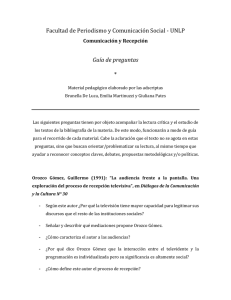
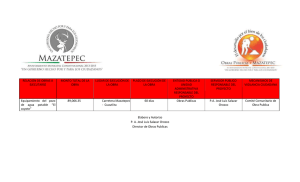
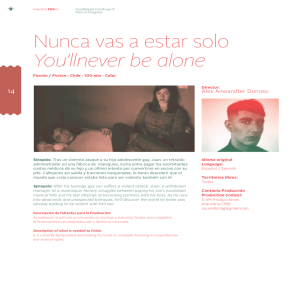
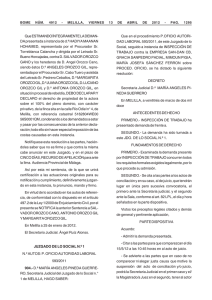
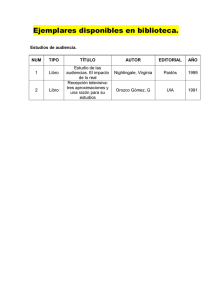
![[Audio] Carta de la Prisionera Política de Guerra Marinelly Hernández Orozco](http://s2.studylib.es/store/data/003886927_1-3712183cfc8bab4b42764d3574e0069f-300x300.png)
